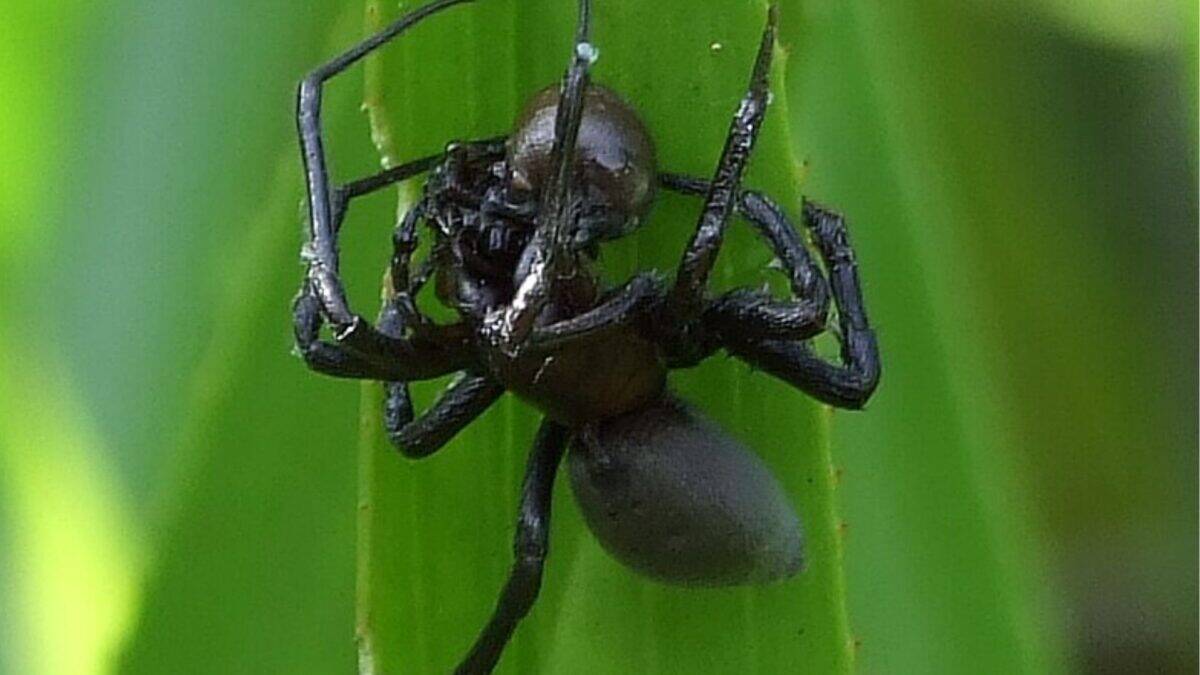In the diverse world of arachnids, few species demonstrate survival adaptations as remarkable as those found in the diving bell spider (Argyroneta aquatica). Unlike its terrestrial cousins, this extraordinary creature has evolved the unique ability to survive underwater not just for minutes or hours, but for days at a time. As the only spider species known to spend its entire life underwater, the diving bell spider represents one of nature’s most fascinating evolutionary marvels. Through ingenious adaptations and behaviors, these spiders have conquered an environment typically hostile to air-breathing arthropods, creating their own underwater oxygen systems that allow for extended submersion. This article explores the remarkable underwater survival abilities of the diving bell spider and the scientific significance of its adaptations.
Introduction to the Diving Bell Spider
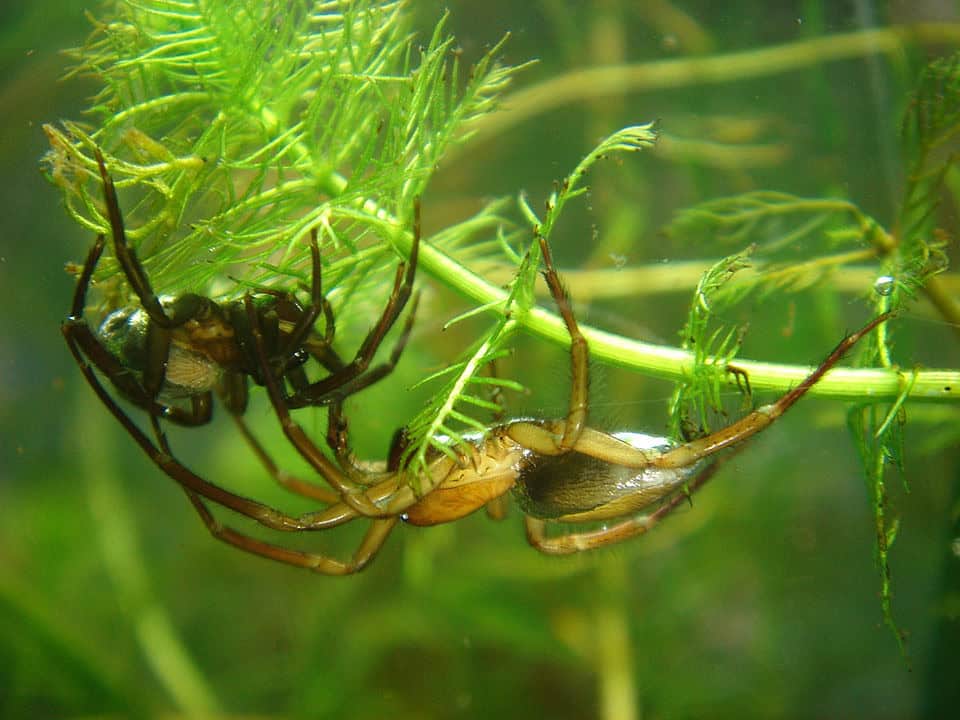
The diving bell spider (Argyroneta aquatica) stands alone in the spider world as the only species that lives almost its entire life underwater. Native to freshwater bodies across Europe and parts of Asia, these medium-sized spiders typically measure between 10-15 millimeters for females and 15-19 millimeters for males. Unlike most spider species where females are larger, diving bell spiders exhibit reverse sexual dimorphism, with males growing notably larger than females. Their bodies appear silvery underwater due to a unique adaptation crucial to their aquatic lifestyle: a coating of hydrophobic hairs that trap a layer of air around their abdomen and legs, creating what appears to be a silvery diving suit. This distinctive appearance has earned them their scientific name Argyroneta, derived from Greek words meaning “silver” and “to spin,” referencing both their silvery underwater appearance and their web-spinning abilities used in a remarkably different environment than most spiders.
The Remarkable Diving Bell: Nature’s Scuba System
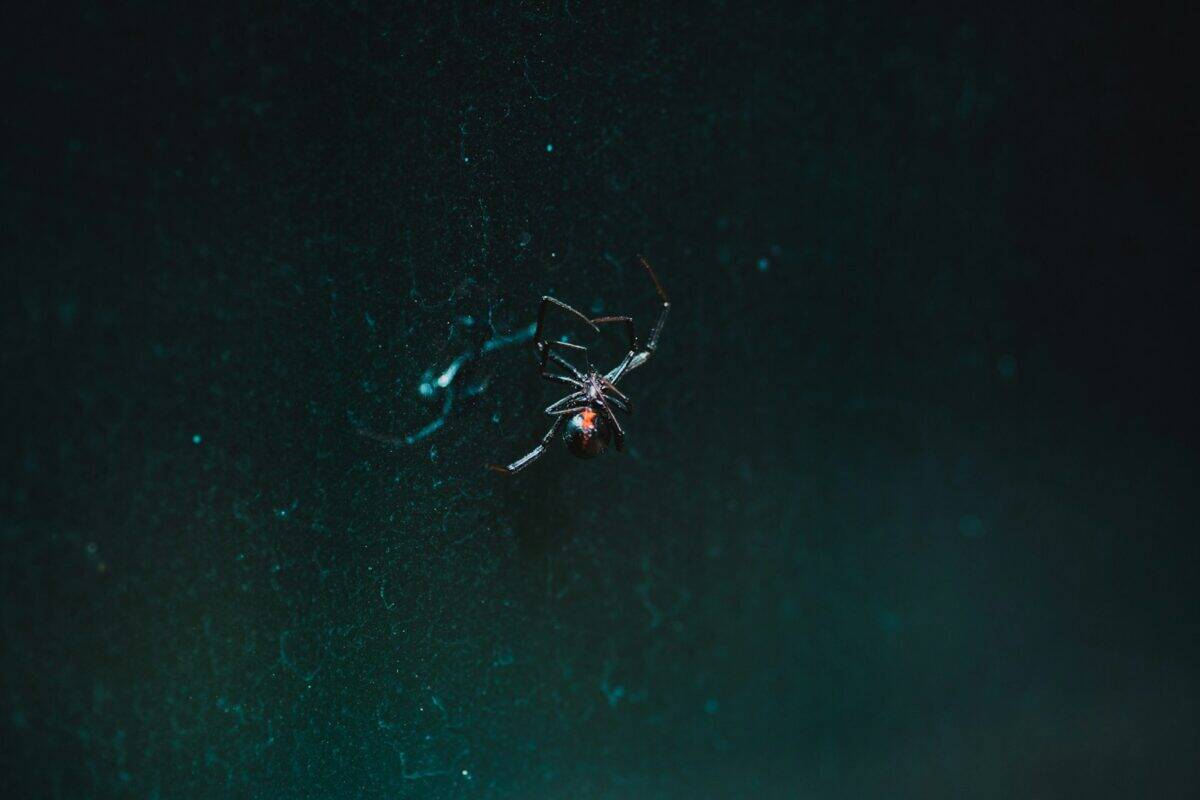
The most extraordinary adaptation of the diving bell spider is its namesake: the underwater “diving bell” or air chamber it constructs using silk and air. To create this submarine home, the spider first weaves a dome-shaped silken structure between underwater plants. After completing this framework, it makes repeated trips to the water’s surface, collecting air bubbles. The spider captures these bubbles using specialized hairs on its abdomen and legs, then transports them back to the silk structure. With each trip, it releases the air bubble into the bell, gradually filling it with oxygen. The completed bell functions as an ingenious physical gill that allows gas exchange between the depleted oxygen in the bell and the oxygen dissolved in the surrounding water. This remarkable structure serves as the spider’s home, hunting platform, mating chamber, and nursery for its young. Within this bubble, the spider can eat, molt, mate, and even raise its offspring—all while remaining underwater for extended periods that can last several days without needing to resurface for additional air.
Scientific Studies on Underwater Survival Durations
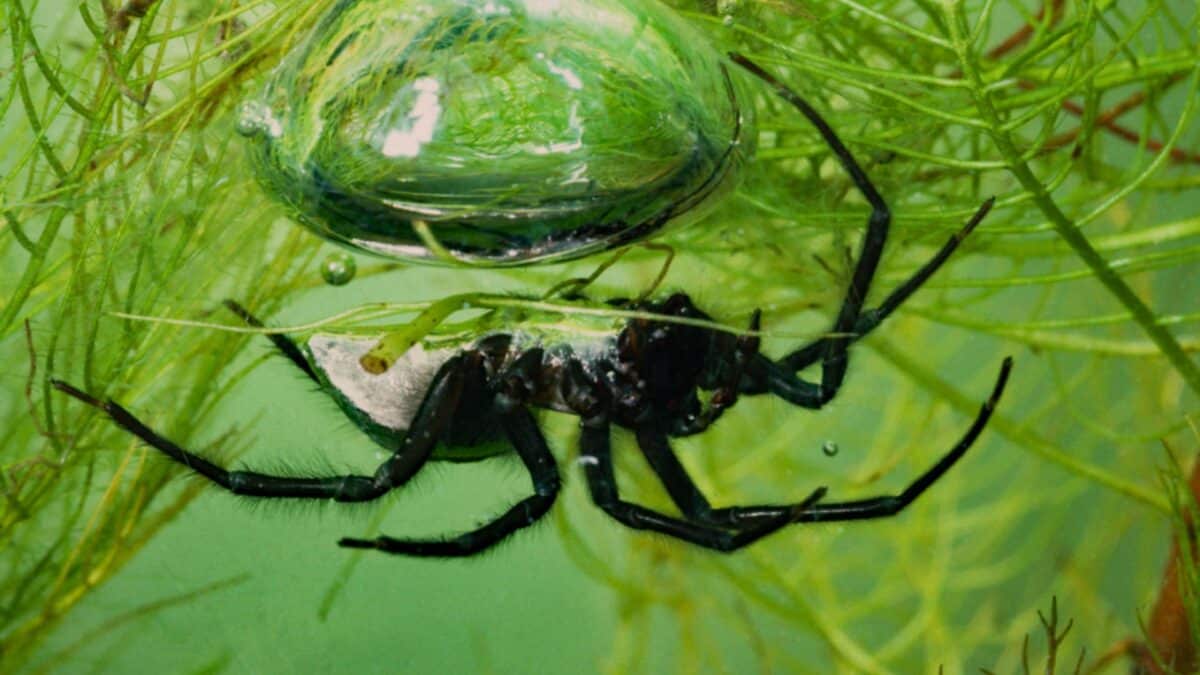
Research has documented the diving bell spider’s extraordinary ability to remain underwater for extended periods. A groundbreaking 2011 study published in the Journal of Experimental Biology by researchers Roger Seymour and Stefan Hetz provided the first detailed measurements of oxygen levels within the diving bells. Using specialized oxygen-sensing optodes, they discovered that the diving bell’s silk membrane facilitates efficient gas exchange with the surrounding water, allowing oxygen to diffuse into the bell as the spider consumes it. Their findings revealed that under normal conditions, diving bell spiders can remain in their underwater chambers for more than 24 hours without needing to replenish the air. In colder water with higher oxygen content, this duration extends significantly—up to several days. Further research has shown that during winter months, when metabolism slows and oxygen solubility in water increases, some individuals have survived underwater for nearly a week without surfacing. These scientific measurements confirm what natural historians had long observed: the diving bell spider possesses one of the most effective underwater survival systems of any air-breathing arthropod.
Specialized Breathing Adaptations

The diving bell spider’s respiratory system has evolved specialized adaptations for its aquatic lifestyle. Like all spiders, it possesses book lungs—respiratory organs consisting of alternating air pockets and tissue that resemble the pages of a book. However, the diving bell spider’s book lungs have developed unique modifications that enhance oxygen absorption efficiency underwater. The hydrophobic (water-repelling) hairs covering its body serve a crucial respiratory function by trapping an air layer known as a plastron. This air film connects to the book lungs and allows for direct oxygen absorption even when the spider ventures outside its diving bell. Additionally, the spider has enlarged spiracles (breathing pores) compared to terrestrial species, facilitating more efficient gas exchange. Perhaps most remarkably, studies have shown that diving bell spiders can regulate their metabolic rate when underwater, reducing oxygen consumption during periods of low activity or when oxygen levels in the bell decrease. This suite of adaptations enables the spider to maximize the utility of available oxygen, extending its underwater survival time far beyond what would be possible for other terrestrial arthropods.
Hunting and Feeding While Submerged

The diving bell spider has developed hunting strategies perfectly adapted to its aquatic environment. Unlike most spiders that rely on webs to trap airborne prey, these underwater hunters are active predators that pursue aquatic organisms. They primarily feed on small crustaceans, insect larvae, and tiny fish that they detect through vibrations in the water. The spider waits inside its diving bell, with its legs extended outward to sense movement in the surrounding water. When prey approaches, it rapidly emerges to capture the victim with its fangs and powerful front legs. The spider then injects venom containing specialized enzymes adapted for aquatic prey, which quickly immobilizes the victim. In a fascinating behavioral adaptation, the spider typically returns to its diving bell with captured prey, pulling the meal into the air chamber where it can be consumed in a dry environment. This feeding strategy demonstrates how completely the species has adapted to underwater life while still maintaining certain terrestrial characteristics. Research has shown that these spiders can capture and consume prey entirely underwater without returning to their air chambers, though they generally prefer to feed within the safety and comfort of their bells when possible.
Mating and Reproduction Underwater

The diving bell spider’s reproductive behaviors are as uniquely adapted to aquatic life as its other characteristics. During mating season, male diving bell spiders construct specialized “courting bells” near female territories. These bells are similar to their regular diving bells but serve specifically as platforms for mating interactions. The male then initiates courtship by creating vibrations in the water using specialized movements of his legs and abdomen. If receptive, the female allows the male to enter her bell, where mating occurs entirely underwater within the air-filled chamber. Following successful mating, the female creates a specialized incubation chamber within her diving bell where she deposits approximately 30-100 eggs in a silken egg sac. She then guards this sac vigilantly for approximately four weeks until the spiderlings hatch. The newly hatched spiderlings remain in the maternal diving bell briefly before dispersing to establish their own underwater territories. Remarkably, the young spiders instinctively know how to create diving bells and collect air bubbles without any parental instruction, demonstrating that this complex behavior is genetically programmed rather than learned. This underwater reproductive cycle represents one of the most specialized breeding adaptations among arachnids.
Geographic Distribution and Habitat Requirements
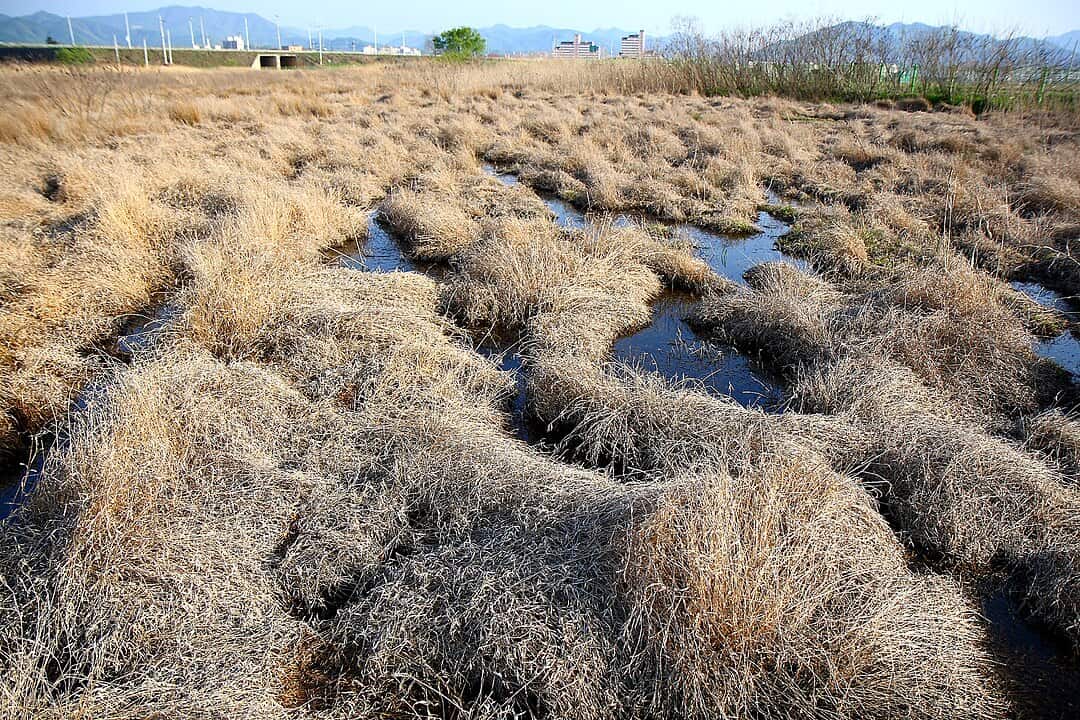
Diving bell spiders inhabit freshwater ecosystems throughout parts of Europe and temperate Asia. Their distribution extends from the United Kingdom across Central Europe and into parts of Russia and northern Asia. Unlike many spider species with broad habitat tolerances, diving bell spiders have specific environmental requirements that limit their distribution. They thrive in clean, well-oxygenated freshwater environments including ponds, slow-moving streams, lakes, and marshes with abundant aquatic vegetation. This vegetation is essential as it provides the structural support for their silk diving bells. The spiders show a particular preference for habitats with plants like water milfoil, hornwort, and water starwort that offer optimal attachment points for their underwater structures. Water quality significantly impacts their survival, as they depend on sufficient dissolved oxygen for respiration through their diving bells. Unfortunately, these specific habitat requirements make diving bell spiders vulnerable to environmental changes. Wetland drainage, water pollution, and habitat degradation have led to population declines in many parts of their range, resulting in protected status in several European countries where they serve as important bioindicators of freshwater ecosystem health.
The Physics Behind Underwater Air Chambers

The diving bell spider’s underwater air chamber represents a fascinating intersection of biology and physics. The structure operates on several physical principles that enable its functionality as an underwater respiratory system. Surface tension plays a crucial role in maintaining the integrity of the air bell. The spider’s silk is hydrophobic (water-repellent) and creates a membrane that effectively contains the air while allowing gas exchange. This structure demonstrates the principle of Fick’s law of diffusion, where gases move from areas of high concentration to low concentration across semipermeable membranes. As the spider consumes oxygen within the bell, the decreasing oxygen concentration creates a concentration gradient that drives oxygen diffusion from the surrounding water into the bell. Similarly, carbon dioxide produced by the spider diffuses outward. The physical properties of water also influence the bell’s function: oxygen solubility in water increases as temperature decreases, meaning the spider’s system works more efficiently in cooler conditions. Additionally, hydrostatic pressure affects the bell’s volume, causing it to compress slightly at greater depths. The spider actively manages this compression by adding air as needed. Researchers studying these principles have noted that the diving bell system represents a remarkably efficient biological adaptation of physical laws that human engineers have only relatively recently replicated with modern diving equipment.
Conservation Status and Threats
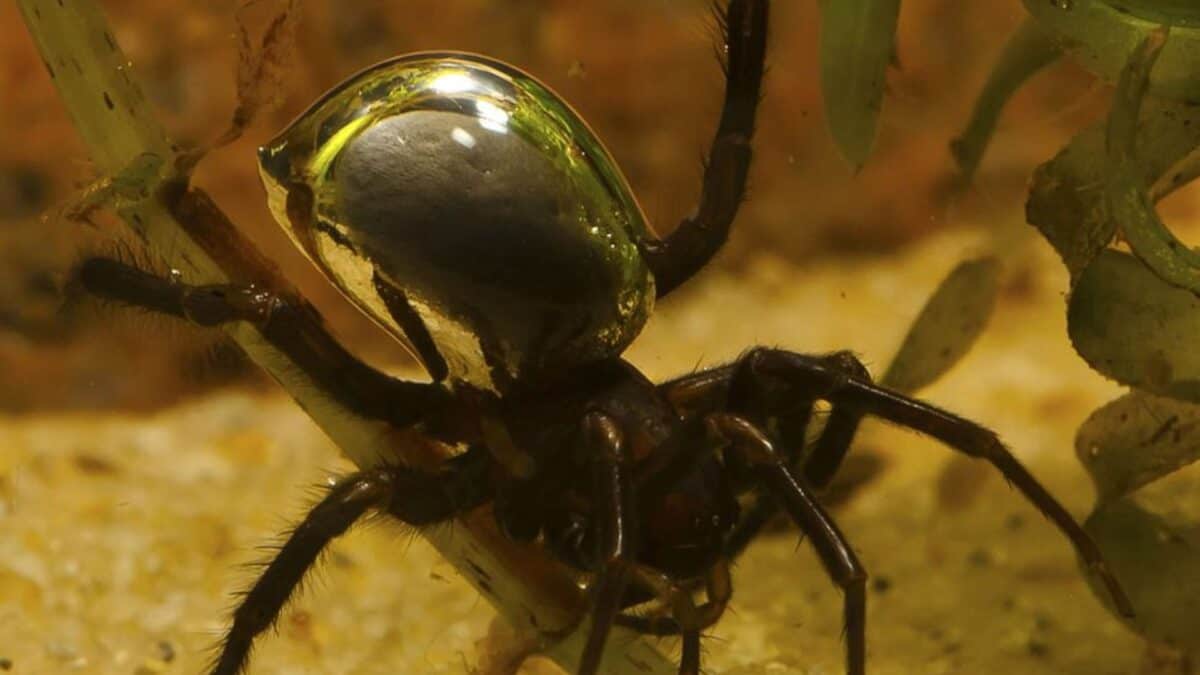
Despite their remarkable adaptations, diving bell spiders face significant conservation challenges across their range. While not globally endangered, many local populations have declined dramatically in recent decades. The species is listed as vulnerable or threatened in several European countries, including the United Kingdom, Germany, and parts of Scandinavia. These declines stem primarily from habitat loss as wetlands continue to be drained for agriculture and development. Water pollution presents another serious threat, as agricultural runoff, industrial contaminants, and sewage reduce water quality and oxygen levels critical for their survival. Climate change further compounds these challenges by altering aquatic ecosystems through temperature changes, modified precipitation patterns, and increased frequency of extreme weather events. Researchers have documented particular sensitivity to certain pesticides and herbicides that either directly harm the spiders or destroy the aquatic vegetation essential for their diving bells. Conservation efforts focus on wetland preservation, water quality improvement, and public education about these unique arachnids. Several European countries have implemented specific habitat protection measures for locations with known diving bell spider populations, recognizing their importance as both unique evolutionary specimens and indicators of healthy freshwater ecosystems.
Scientific Significance and Research Applications

The diving bell spider’s remarkable adaptations have inspired multiple fields of scientific research and technological innovation. Biomimetic engineers study their diving bells to develop improved underwater breathing apparatus and submersible structures that maximize efficiency while minimizing material use. The hydrophobic properties of their body hairs have influenced the development of water-repellent materials and fabrics. Medical researchers examine the oxygen-retention capabilities of their respiratory systems for insights into treating human respiratory conditions and developing artificial oxygen carriers. Environmental scientists utilize diving bell spiders as bioindicators for freshwater ecosystem health, as their presence typically signals good water quality with appropriate oxygen levels. Additionally, evolutionary biologists study these spiders as a prime example of adaptation to an extreme niche, offering insights into how species can transition between fundamentally different habitats. Their unique diving bell silk, which remains stable underwater for extended periods without degradation, has prompted research into new waterproof adhesives and materials. Furthermore, the efficient gas exchange system of their bells has informed designs for artificial gills and underwater habitats. This scientific interest extends beyond practical applications, as the diving bell spider represents an extraordinary example of evolutionary problem-solving that continues to inspire research across disciplines.
Comparison to Other Aquatic Arthropods

While the diving bell spider stands alone as the only truly aquatic spider, several other arthropods have evolved adaptations for underwater survival that provide interesting comparative studies. Water spiders (Dolomedes species), often confused with diving bell spiders, can walk on water surfaces and dive briefly but must return to air regularly and cannot construct underwater air chambers. Various diving beetle species (Dytiscidae family) carry air bubbles beneath their wing cases but typically need to resurface more frequently than diving bell spiders. The water boatman (Corixidae family) carries an air bubble against its ventral surface that functions similarly to the diving bell spider’s plastron but generally allows for shorter submersion periods. Marine arthropods like certain crabs have developed gills for direct oxygen extraction from water, representing a different evolutionary solution to aquatic life. What distinguishes the diving bell spider is its unique combination of terrestrial respiratory organs adapted for underwater use through behavioral innovation (bell construction) and physical adaptations (hydrophobic hairs). This hybrid approach—maintaining air-breathing physiology while adapting to aquatic environments—represents an evolutionary middle ground between fully terrestrial and fully aquatic respiratory systems. Comparative studies between these different arthropods reveal diverse evolutionary pathways to conquering underwater habitats and demonstrate the remarkable versatility of arthropod body plans in adapting to challenging environments.
Observations and Documentation in Scientific Literature
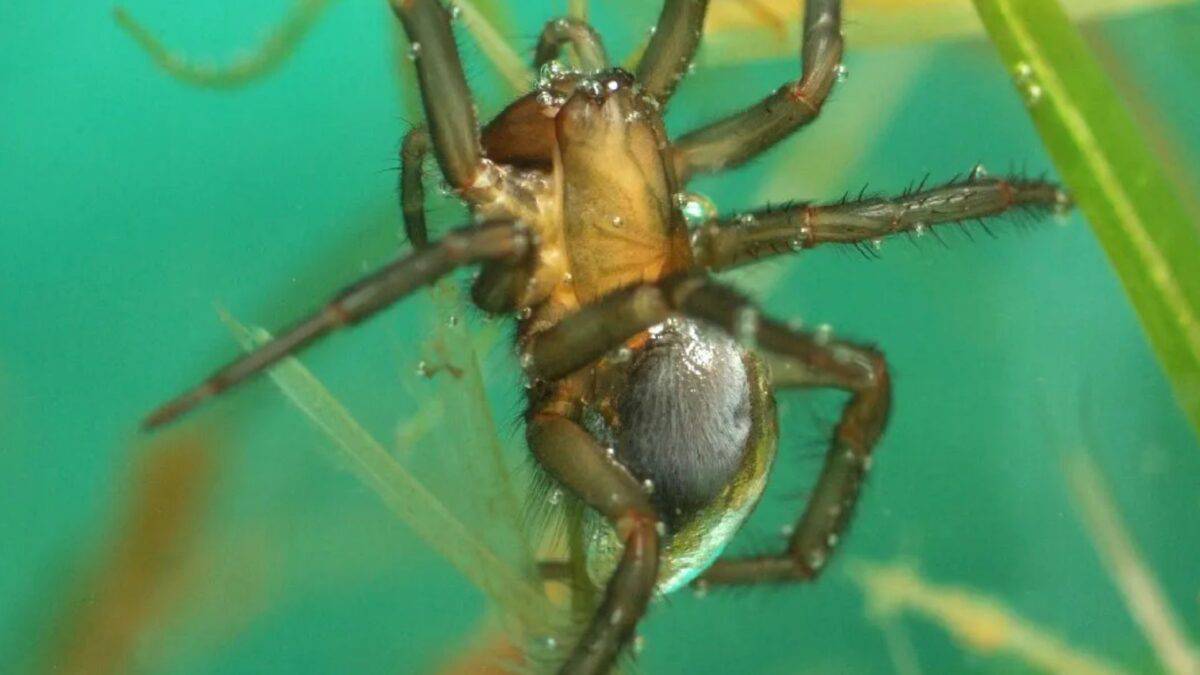
The diving bell spider has fascinated naturalists and scientists for centuries, with documentation of its unusual lifestyle appearing in scientific literature as early as 1749 when French naturalist Pierre Lyonet first described the species’ underwater habits. However, it was French entomologist Baron Walckenaer who provided the first detailed scientific description in 1805, naming it Argyroneta aquatica. Throughout the 19th century, naturalists including Jean-Henri Fabre documented observations of the spider’s diving bell construction and underwater behavior, though many of these early accounts contained inaccuracies due to the challenges of underwater observation. Modern scientific understanding advanced significantly with the development of underwater photography and specialized research techniques in the mid-20th century. Wagner’s studies in the 1980s provided the first comprehensive analysis of the diving bell’s structure and function, while Schütz and Taborsky’s research in the early 2000s clarified many aspects of the species’ mating behavior and sexual dimorphism. The landmark 2011 study by Seymour and Hetz published in The Journal of Experimental Biology provided the first precise measurements of oxygen dynamics within the diving bell, confirming its function as a physical gill. Most recently, research has expanded to include genetic studies examining the evolutionary pathways that led to the spider’s unique adaptations, with ongoing investigations continuing to reveal new aspects of this remarkable species’ biology.
The diving bell spider stands as one of nature’s most remarkable evolutionary innovations—a creature that bridges terrestrial and aquatic worlds through specialized adaptations and behaviors. Its ability to survive underwater for days by creating its own oxygen chamber demonstrates the extraordinary adaptability of life to conquer challenging environments. From its hydrophobic hair coating and specialized respiratory system to its ingenious use of silk to construct underwater air chambers, every aspect of this spider’s biology represents specialized evolution for its unique ecological niche. As climate change and habitat loss increasingly threaten wetland ecosystems worldwide, the diving bell spider’s future depends on conservation efforts that recognize and protect these unique habitats. For scientists, engineers, and naturalists alike, this exceptional arachnid continues to inspire wonder and innovation through its underwater survival strategies. The diving bell spider reminds us that the natural world often develops solutions to environmental challenges that surpass human engineering in their elegance and efficiency. In an age where biomimicry increasingly informs technological development, this tiny underwater architect offers valuable lessons in adaptation, resource efficiency, and evolutionary innovation that extend far beyond its small freshwater habitats.
- The Coldest Town in America—And How People Survive There - August 9, 2025
- How Some Birds “Steal” Parenting Duties From Others - August 9, 2025
- 12 Deep-Sea Creatures You Won’t Believe Exist - August 9, 2025

